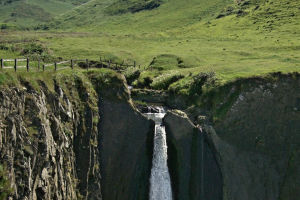Paragliding is the aviation sport with the closest interaction between man and nature, and is loved by those who admire nature. With the rise of outdoor sports, more and more enthusiasts come into contact with, experience and participate in the sport of paragliding.
Paragliding originated in Europe in the 1970s. The original paraglider was a parachute with an airfoil used for parachuting. It is mainly descending, with fast descending speed and good safety performance. After more than 30 years of development and evolution, the current paraglider can fly for up to 17 hours continuously, and the longest straight flight distance exceeds 500 kilometers.
Many people can't tell the difference between paragliding and skydiving, but they are completely different sports. Skydiving is to jump off the plane and enjoy the thrill of free fall. The parachute used can only descend, and the controllability is not strong. Paragliders usually take off from the hillside, and the speed is not fast and the controllability is strong under normal flight conditions.
Many people will have concerns about the safety of paragliding. In fact, paragliding is a popular leisure sport, and professionals have extreme gameplay. Some people think that flying so high is too dangerous. What if you fall down, in fact, for beginners, it is basically impossible to completely lose control.
The real danger of paragliders is taking off and landing, and it is most dangerous when you are close to the ground. Paragliders are divided into two categories: unpowered paragliders and powered paragliders.
1. Power paraglider
The power paraglider is equipped with a power device on the paraglider. The power control makes it safer to fly, and can also ensure a fixed flight time. The take-off height on the flat ground can climb 400 to 500 meters high, and the powered paraglider does not have high requirements for the weather.
2. Unpowered paragliders
At present, most of the experiences are unpowered paragliders. Unpowered paragliders have high requirements on weather conditions because they do not have any power, and they are completely controlled by the pilot during the flight.
Although paragliding is fun and exciting, it also coexists with danger. If you are not careful, there will be danger. You should prepare for paragliding in advance and pay attention to the following matters.
1. Pay attention to the change of wind speed
Wind changes of more than 8 km/h in 4 seconds or less are generally unsafe for paraglider flight. Also, it is not safe for wind speed to vary by more than half the stall speed.
2. Pay attention to pre-flight inspection
Inspect the entire canopy for tears, punctures, and abrasions, and look for pulls or unstitches, paying particular attention to the leading edge of the canopy's lower surface. If there is any problem, it should be corrected immediately, otherwise it must be grounded immediately.
4. Pay attention to the judgment of the flight field
If the flight field is unfamiliar terrain, the pilot needs to be accompanied by a local pilot or senior pilot, and demonstrate the flight first to familiarize himself with the field and local airflow.
5. Pay attention to the judgment of climate
Different seasons will produce different airflow patterns, so it is necessary to determine the weather in advance to ensure flight safety. In spring and summer, pay special attention to rapid changes in the weather, and in winter, pay attention to the sudden increase in wind speed.
6. Beware of strong airflow
When we are gliding, we must beware of turbulence caused by strong air currents or terrain winds. Before departure, we must do rigorous training and psychological preparation, and plan all contingency plans.


